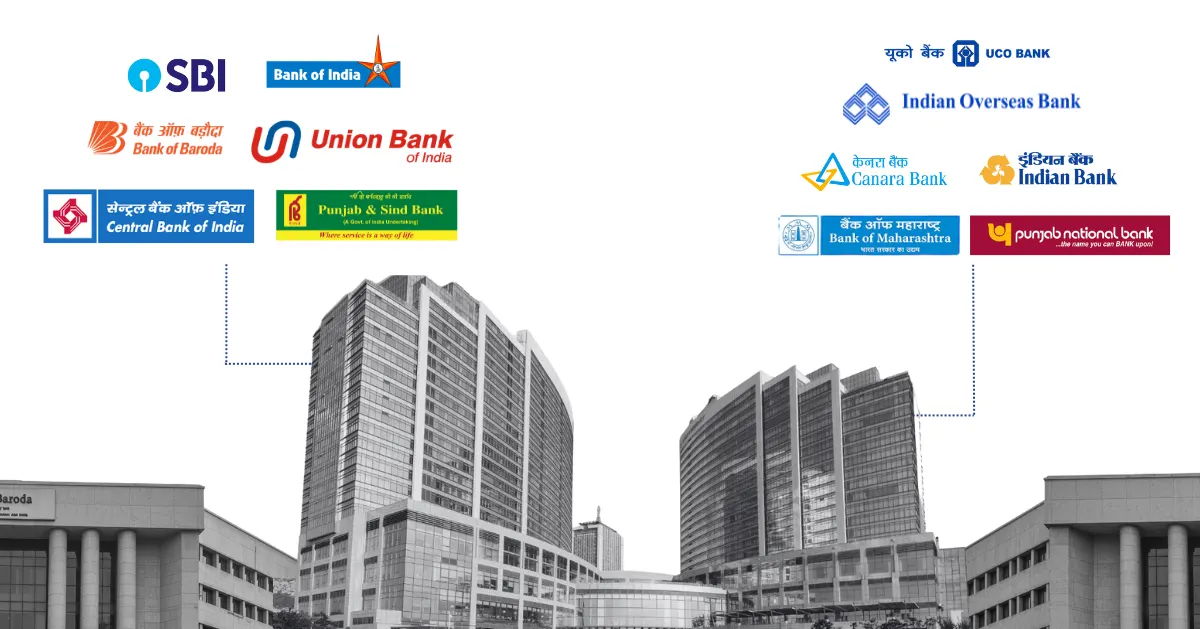
Introduction
Capital Expenditure (CapEx) plays a crucial role in how businesses allocate their resources to achieve long-term growth and sustainability. As companies evolve, investing in physical assets such as property, machinery, or technological advancements becomes vital for enhancing operations and maintaining a competitive edge. Proper management and understanding of Long-term investments can significantly impact financial health, ensuring businesses are well-equipped to scale operations, innovate, and maintain operational efficiency.
In this comprehensive guide, we will explore what Capital Expenditure is, its types, how to plan and manage it, and the impact it has on business growth. Additionally, we will highlight best practices, common mistakes to avoid, and provide you with expert insights to optimize your business investment strategies.
What is Capital Expenditure (CapEx)?
Capital Expenditure refers to the funds a company allocates to acquire, upgrade, or maintain physical assets, such as buildings, equipment, or technology. These expenditures are intended to enhance the company’s ability to generate future revenue. Unlike operational expenses, which involve daily activities, Capital Expenditure is focused on long-term investments and growth.
Key Characteristics of Capital Expenditure
- Long-Term Asset Investment: The main goal of Capital Expenditure is to purchase assets that offer benefits for more than one year, providing long-term value.
- Affects Cash Flow and Depreciation: Long-term investments are recorded as an asset on the balance sheet. Over time, it depreciates, unlike operational costs, which are expensed immediately.
- Supports Business Growth: Efficient Capital Expenditure management facilitates business expansion, efficiency, and improved competitiveness.
Why is Capital Expenditure Important?
- Business Expansion: Long-term investments allows companies to expand operations, whether through purchasing new machinery or opening new facilities, which helps increase production and revenues.
- Technological Advancements: In rapidly evolving industries, businesses need to invest in cutting-edge technologies to stay competitive, making Capital Expenditure an essential tool.
- Operational Efficiency: By upgrading assets and processes, businesses can significantly reduce operational costs, improve service delivery, and enhance customer satisfaction.
Examples of Capital Expenditure
To better understand Capital Expenditure, consider the following examples:
- Manufacturing: Companies like Ford and Toyota invest in robotic assembly lines to increase production capacity and efficiency.
- Retail: Walmart allocates a significant portion of its budget to improving logistics and supply chains, a key component of its Long-term investments .
- Technology: Google’s investment in data centers and cloud infrastructure falls under Capital Expenditure, enabling the company to provide better services to its users.
Difference Between Capital Expenditure and Operational Expenditure
It is essential to distinguish between Capital Expenditure (CapEx) and Operational Expenditure (OpEx). These two types of expenditures have different purposes and accounting treatments.
| Aspect | Capital Expenditure (CapEx) | Operational Expenditure (OpEx) |
| Purpose | Long-term business investment | Short-term expenses |
| Accounting Treatment | Capitalized and depreciated | Deducted as incurred |
| Examples | Purchasing machinery, real estate, software development | Rent, utilities, employee salaries |
| Impact on Financial Planning | Affects cash flow but provides long-term value | Recurring cost, impacts profit margins |
For instance, the cost of building a new store is considered Capital Expenditure, while the ongoing rent and utility payments for the store are Operational Expenditures.
Types of Capital Expenditures in Business
Businesses categorize Capital Expenditure based on their purpose and long-term goals. These categories help prioritize investments and manage resources effectively.
- Growth CapEx
Growth CapEx involves investments made to expand operations. This could include building new factories, acquiring new machinery, or improving technology. A prime example is Tesla’s investment in Gigafactories, increasing production capacity. - Maintenance CapEx
Long-term investments are used to maintain or repair existing assets. For example, a company may allocate funds to replace outdated equipment, perform facility repairs, or modernize outdated technology. - Tangible CapEx
Tangible CapEx includes investments in physical assets such as land, buildings, and machinery. Companies like Amazon continually invest in distribution centers and warehouses, which are vital to their operations. - Intangible CapEx
Intangible Capital Expenditure refers to investments in intellectual property, software, and research and development. Microsoft, for example, invests heavily in software development and patents, ensuring their continued leadership in innovation.
How to Plan and Manage Capital Expenditures
Effective Capital Expenditure management is crucial for ensuring that a business remains financially sound while achieving long-term goals. Below are steps that businesses can take to plan and manage their Capital Spending:
1.Align CapEx with Business Goals
It’s essential for businesses to ensure that Capital Expenditure aligns with their strategic goals. For instance, Amazon’s investment in fulfillment centers matches its goal of improving supply chain efficiency.
2.Forecast Future Cash Flow Needs
Before making large investments, businesses need to assess future cash flows to ensure that they have sufficient liquidity for ongoing operations and Long-term investments projects.
3.Consider Financing Options
Capital Expenditure projects can be financed through various means, including debt, equity, or leasing options. For example, Google raised over $5 billion in 2023 by issuing bonds to finance infrastructure projects.
4.Set a Realistic Budget
Businesses must carefully plan their Long-term investments budget, considering both immediate needs and long-term goals. Setting aside a portion of the annual revenue for CapEx ensures that companies have funds available for growth and maintenance.
5.Evaluate Return on Investment (ROI)
Before approving any Capital spending project, businesses should assess the potential return on investment (ROI). This helps ensure that each investment will contribute positively to the company’s bottom line.
6.Prioritize High-Impact Investments
Focusing on investments that will deliver the most value to the business can help optimize resource allocation. For instance, investing in automation technology may offer long-term savings by reducing labor costs.
Read blog: Return on Investment (ROI): Meaning, Calculation and Benefits
Common Mistakes to Avoid in Managing Capital Expenditures
While planning and managing Capital spending, companies should avoid the following mistakes:
- Failure to Align with Business Strategy: Investments made without considering the company’s strategic goals can lead to wasted resources and missed opportunities for growth.
- Overestimating Returns: Over-optimistic projections of returns from Long-term investments can cause financial strain if the expected outcomes don’t materialize.
- Lack of Regular Review: Failure to regularly review and adjust Long-term investments plans based on market conditions and company performance can lead to inefficiencies.
- Inadequate Cash Flow Planning: Without a solid understanding of the cash flow implications, businesses may struggle to finance large Capital Expenditure projects.
Impact of CapEx on Business Growth and Financial Health
Properly managed Capital Expenditure can have a significant impact on a business’s growth trajectory and long-term financial health. Here’s how:
- Business Expansion
Strategically investing in infrastructure and new facilities allows businesses to scale their operations. For example, Amazon’s continuous investment in distribution centers has been pivotal in expanding its market presence. - Competitive Advantage
Investing in new technologies, such as research and development, helps businesses stay ahead of competitors. Companies like Apple continue to invest in product development, maintaining their competitive edge in the tech industry. - Cost Efficiency & Productivity
Investments in automation and modern infrastructure can reduce operational costs and improve productivity. For example, Toyota’s investment in automated assembly lines has reduced labor costs and enhanced production efficiency. - Long-Term Financial Stability
When managed correctly, CapEx can help increase a company’s asset base and attract more favorable financing options. Strong CapEx strategies also build investor confidence, making it easier to secure funding for future projects. - Risk Mitigation
Investing in infrastructure upgrades, such as cybersecurity, can minimize risks associated with outdated systems, protecting the company from financial losses.
Conclusion
Strategic planning of Capital Expenditure is key to a company’s long-term success. By investing in the right assets and aligning these investments with business goals, companies can expand, innovate, and achieve sustainable growth. Businesses that understand the intricacies of Long-term investments are better positioned to navigate market challenges and financial risks.
RegisterKaro offers expert services to help businesses manage their Capital Expenditure and ensure compliance with financial and regulatory requirements. With strategic budgeting, legal advisory, and compliance services, RegisterKaro helps businesses optimize their investment decisions for long-term success.
Contact Us Today:
Email: support@registerkaro.in
Call: +918447746183
Frequently Asked Questions (FAQs)
- What qualifies as Capital Expenditure?
- Any long-term investment in physical or intangible assets, such as machinery, property, or software development, is considered Capital Expenditure.
- Any long-term investment in physical or intangible assets, such as machinery, property, or software development, is considered Capital Expenditure.
- How does CapEx differ from OpEx?
- Capital spending is for acquiring assets with long-term value, while Operational Expenditure includes ongoing costs for daily business operations.
- Capital spending is for acquiring assets with long-term value, while Operational Expenditure includes ongoing costs for daily business operations.
- How do businesses finance CapEx?
- Businesses can finance Capital Expenditure through debt, equity, or leasing options, depending on their financial structure and goals.
- Businesses can finance Capital Expenditure through debt, equity, or leasing options, depending on their financial structure and goals.
- Why is CapEx important in financial planning?
- Proper budgeting of Long-term investments ensures that companies can make critical investments without compromising cash flow or operational efficiency.
- Proper budgeting of Long-term investments ensures that companies can make critical investments without compromising cash flow or operational efficiency.
- How can RegisterKaro help with CapEx decisions?
- RegisterKaro provides guidance on compliance, legal advisory, and strategic planning for managing Capital Expenditure effectively.
- RegisterKaro provides guidance on compliance, legal advisory, and strategic planning for managing Capital Expenditure effectively.




